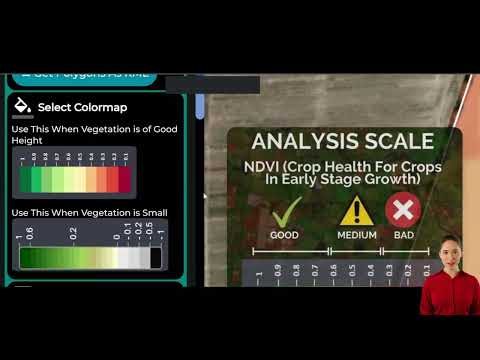RFID Sensor Market Soars: North America Leads $50 Billion Industry Growth by 2033
“The RFID sensor market is projected to grow by 177% from $18 billion in 2023 to $50 billion by 2033.”
In the rapidly evolving landscape of technology and automation, Radio Frequency Identification (RFID) sensors have emerged as a game-changing solution across various industries. As we delve into the intricacies of this burgeoning market, we’ll explore the factors driving its explosive growth, the key players shaping its future, and the transformative impact it’s having on global supply chains and operational efficiency.
The RFID Sensor Market: A Snapshot of Growth
The RFID sensor market is experiencing a period of unprecedented expansion. According to recent research, the market value is projected to surge from $18 billion in 2023 to an impressive $50 billion by 2033. This remarkable growth trajectory represents a compound annual growth rate (CAGR) of 10.9% from 2024 to 2033, underscoring the increasing demand for RFID technology across multiple sectors.

Key Drivers of Market Expansion
Several factors are contributing to the robust growth of the RFID sensor market:
- Increasing Automation: Industries such as retail, logistics, and healthcare are rapidly adopting RFID technology to enhance operational efficiency and streamline inventory management processes.
- IoT Integration: The rising adoption of Internet of Things (IoT) and smart technologies has significantly boosted the demand for RFID sensors, enabling real-time data collection and improved decision-making capabilities.
- Consumer Expectations: The growing demand for seamless, touchless experiences is driving RFID adoption in areas like contactless payments and efficient supply chain management.
- Regulatory Pressures: Industries such as pharmaceuticals and healthcare are facing increasing regulatory requirements for safety and compliance, creating opportunities for RFID technology to ensure product authenticity and traceability.
Market Segmentation: Understanding the RFID Landscape
To gain a comprehensive understanding of the RFID sensor market, it’s crucial to examine its various segments:
1. RFID Type
The passive RFID segment dominated the market in 2023, primarily due to its cost-effectiveness, compact size, and ease of deployment. These passive tags, which operate using radio waves from the reader, are widely used in retail and logistics for inventory management and tracking. The demand for passive RFID solutions is expected to grow further as businesses focus on enhancing supply chain efficiency and automation.
2. Frequency Range
The ultra-high frequency (UHF) segment led the market in 2023, thanks to its extensive read range and rapid data transfer capabilities. UHF RFID technology is particularly well-suited for applications in logistics, inventory management, and asset tracking. The increasing demand for real-time visibility and efficient supply chain operations continues to drive the adoption of UHF technology, with ongoing advancements further enhancing its performance.
3. Application
Logistics and supply chain management emerged as the leading application segment in 2023. Businesses are leveraging RFID technology to improve visibility and streamline operations, especially in the face of growing e-commerce and faster delivery expectations. The focus on efficient inventory management addresses the pressing needs of modern supply chains, making this segment a key driver of market growth.
Regional Analysis: North America Leads the Charge
North America emerged as the leading market for RFID sensors in 2023, a position it’s expected to maintain throughout the forecast period. This dominance can be attributed to several factors:
- Robust Technological Infrastructure: The region benefits from advanced technological infrastructure, fostering innovation in RFID solutions.
- Substantial R&D Investments: Significant investments in research and development are driving the creation of cutting-edge RFID technologies.
- High Demand in Key Sectors: Industries such as retail and healthcare are rapidly adopting RFID technology to enhance operations and comply with regulations.
- Stringent Regulations: Strict regulatory requirements in sectors like pharmaceuticals are encouraging the adoption of RFID for product tracking and authentication.
“North America leads the RFID sensor market growth, with passive RFID and UHF technologies dominating the industry.”
RFID Technology in Supply Chain Management
One of the most significant applications of RFID technology is in supply chain management. RFID sensors are revolutionizing how businesses track and manage inventory, offering unprecedented visibility and efficiency. Here’s how RFID is transforming supply chains:
- Real-time Tracking: RFID enables real-time tracking of products from manufacture to delivery, reducing loss and improving inventory accuracy.
- Automated Data Collection: RFID tags automatically collect and transmit data, eliminating manual processes and reducing human error.
- Enhanced Visibility: With RFID, businesses gain a clear view of their entire supply chain, enabling better decision-making and resource allocation.
- Improved Efficiency: RFID technology streamlines processes, reducing labor costs and improving overall operational efficiency.
As the RFID sensor market continues to grow, we can expect to see even more innovative applications in supply chain management, further optimizing logistics operations and enhancing customer satisfaction.

The Rise of UHF RFID Applications
Ultra-High Frequency (UHF) RFID technology is gaining significant traction across various industries due to its superior read range and data transfer capabilities. Some key applications include:
- Retail Inventory Management: UHF RFID enables retailers to conduct rapid inventory counts, reducing labor costs and improving accuracy.
- Warehouse Management: UHF RFID systems optimize warehouse operations by automating inventory tracking and reducing picking errors.
- Asset Tracking: Industries such as healthcare and manufacturing use UHF RFID to track valuable assets and equipment in real-time.
- Supply Chain Visibility: UHF RFID provides end-to-end visibility in complex supply chains, enhancing traceability and reducing loss.
As UHF RFID technology continues to evolve, we can expect to see even more innovative applications emerge, further driving market growth and operational efficiency across industries.
Passive RFID Market Trends
Passive RFID technology continues to dominate the market, thanks to its cost-effectiveness and versatility. Key trends in the passive RFID segment include:
- Miniaturization: Ongoing efforts to reduce the size of passive RFID tags are expanding their potential applications.
- Improved Read Ranges: Advancements in antenna design and chip technology are extending the read ranges of passive RFID systems.
- Integration with IoT: Passive RFID is increasingly being integrated with IoT platforms, enhancing data collection and analysis capabilities.
- Sustainability Focus: The development of eco-friendly passive RFID tags is gaining traction, aligning with global sustainability initiatives.
These trends are driving the adoption of passive RFID across various industries, from retail to manufacturing, contributing significantly to the overall market growth.
RFID in Logistics and Inventory Management
The logistics and inventory management sector represents one of the most significant growth areas for RFID technology. Here’s how RFID is transforming these critical business functions:
- Automated Inventory Counts: RFID enables rapid, accurate inventory counts without manual intervention, reducing labor costs and improving efficiency.
- Real-time Stock Visibility: RFID systems provide real-time visibility into stock levels, helping businesses optimize inventory and reduce stockouts.
- Enhanced Order Fulfillment: RFID technology streamlines order picking and packing processes, improving accuracy and speed.
- Improved Loss Prevention: RFID tags help businesses track and locate items, reducing theft and loss throughout the supply chain.
As businesses continue to focus on optimizing their supply chains and improving operational efficiency, the adoption of RFID in logistics and inventory management is expected to accelerate, driving further market growth.
RFID Market Forecast 2033: A Look Ahead
As we look towards 2033, the RFID sensor market is poised for continued growth and innovation. Here’s what we can expect:
- Market Value: The market is projected to reach $50 billion by 2033, representing a significant increase from $18 billion in 2023.
- Technological Advancements: Ongoing research and development will lead to more sophisticated RFID solutions, including improved read ranges, smaller form factors, and enhanced data processing capabilities.
- Industry-specific Solutions: We can expect to see more tailored RFID solutions emerging for specific industries, addressing unique challenges and requirements.
- Integration with Emerging Technologies: RFID is likely to become more closely integrated with other emerging technologies such as AI, blockchain, and edge computing, creating more powerful and versatile solutions.
As the RFID market continues to evolve, businesses that embrace this technology will be well-positioned to enhance their operational efficiency, improve customer satisfaction, and gain a competitive edge in an increasingly digital world.
| Year | Market Value (in Billion USD) | Key Drivers |
|---|---|---|
| 2023 | 18 | Increasing automation, IoT adoption, consumer demand for seamless experiences |
| 2028 | 30 (estimated) | Advancements in UHF technology, expansion in retail and healthcare sectors |
| 2033 | 50 (projected) | Integration with AI and blockchain, industry-specific RFID solutions, sustainability focus |
RFID for Operational Efficiency
One of the primary drivers of RFID adoption across industries is its potential to significantly enhance operational efficiency. Here’s how RFID technology is helping businesses streamline their operations:
- Automated Data Collection: RFID eliminates the need for manual data entry, reducing errors and freeing up staff for more value-added tasks.
- Improved Asset Utilization: By tracking assets in real-time, businesses can optimize their use and reduce unnecessary purchases.
- Enhanced Process Visibility: RFID provides detailed insights into business processes, allowing for continuous improvement and optimization.
- Reduced Labor Costs: Automation of inventory counts and other routine tasks leads to significant labor cost savings.
As businesses continue to focus on improving their operational efficiency, the adoption of RFID technology is expected to accelerate, driving further innovation and market growth.
RFID in Retail and Healthcare
The retail and healthcare sectors are among the largest adopters of RFID technology, leveraging its capabilities to enhance operations and improve customer experiences. Here’s how RFID is transforming these industries:
Retail Applications
- Inventory Accuracy: RFID enables retailers to maintain near-perfect inventory accuracy, reducing stockouts and overstocks.
- Omnichannel Fulfillment: RFID facilitates efficient order fulfillment across multiple channels, improving customer satisfaction.
- Loss Prevention: RFID tags help retailers reduce shrinkage by enabling better tracking and monitoring of merchandise.
- Enhanced Customer Experience: RFID-enabled smart fitting rooms and self-checkout systems improve the shopping experience.
Healthcare Applications
- Asset Tracking: RFID helps hospitals track valuable medical equipment, ensuring availability when needed and reducing loss.
- Patient Safety: RFID wristbands improve patient identification and medication administration accuracy.
- Inventory Management: RFID enables efficient tracking of medications and supplies, reducing waste and ensuring availability.
- Compliance: RFID technology helps healthcare providers meet regulatory requirements for tracking and tracing medical devices and pharmaceuticals.
As these industries continue to evolve, we can expect to see even more innovative applications of RFID technology emerge, further driving market growth and improving operational efficiency.
RFID Asset Tracking Solutions
Asset tracking is one of the most widespread and valuable applications of RFID technology across industries. RFID asset tracking solutions offer numerous benefits:
- Real-time Visibility: RFID enables real-time tracking of assets, providing up-to-date information on location and status.
- Improved Accuracy: RFID tags reduce human error in asset tracking, providing more accurate inventory counts and location data.
- Enhanced Security: RFID asset tracking helps prevent theft and loss by enabling quick identification of missing items.
- Maintenance Scheduling: RFID can track usage and maintenance history, facilitating proactive maintenance scheduling.
- Compliance: In regulated industries, RFID asset tracking helps ensure compliance with audit and reporting requirements.
As businesses increasingly recognize the value of efficient asset management, the demand for RFID asset tracking solutions is expected to grow, contributing significantly to the overall market expansion.
North America RFID Market Leaders
North America continues to lead the global RFID sensor market, with several key players driving innovation and growth in the region. While we can’t mention specific companies, the market leaders in North America are characterized by:
- Extensive R&D Investments: Leading companies allocate significant resources to research and development, driving technological advancements in RFID.
- Diverse Product Portfolios: Market leaders offer a wide range of RFID solutions catering to various industries and applications.
- Strong Industry Partnerships: Collaborations with technology providers, system integrators, and end-users help market leaders deliver comprehensive RFID solutions.
- Focus on Innovation: Continuous innovation in areas such as miniaturization, improved read ranges, and integration with other technologies keeps these companies at the forefront of the market.
As the RFID market continues to grow, we can expect these North American market leaders to play a crucial role in shaping the future of RFID technology and its applications across industries.
The Role of RFID in Precision Agriculture
While RFID technology is transforming various industries, its potential in agriculture, particularly in precision farming, is increasingly recognized. RFID sensors can play a crucial role in enhancing agricultural practices, improving crop yields, and promoting sustainable farming. Here’s how RFID is making an impact in agriculture:
- Livestock Tracking: RFID tags help farmers monitor the health, location, and breeding history of individual animals.
- Supply Chain Traceability: RFID enables farm-to-table traceability, ensuring food safety and quality control.
- Equipment Management: RFID tags on farm equipment facilitate better maintenance scheduling and prevent theft.
- Crop Monitoring: When combined with other sensors, RFID can help track crop growth, soil conditions, and irrigation needs.
While RFID technology offers significant benefits in agriculture, it’s important to note that other technologies, such as satellite-based solutions, also play a crucial role in precision farming. For instance, Farmonaut, a pioneering agricultural technology company, offers advanced satellite-based farm management solutions that complement and enhance the capabilities of on-ground technologies like RFID.
Farmonaut’s platform provides valuable services such as real-time crop health monitoring, AI-based advisory systems, and resource management tools. By leveraging satellite imagery and artificial intelligence, Farmonaut enables farmers to make data-driven decisions, optimize resource usage, and improve crop yields.
To learn more about how satellite technology is revolutionizing agriculture, you can explore Farmonaut’s offerings:
For developers interested in integrating satellite-based agricultural data into their own applications, Farmonaut also offers an API:
The Future of RFID Technology
As we look towards the future, the RFID sensor market is poised for continued growth and innovation. Here are some key trends and developments we can expect to see:
- Integration with IoT and AI: RFID technology will become more closely integrated with IoT devices and AI systems, enabling more sophisticated data analysis and predictive capabilities.
- Improved Energy Efficiency: Advancements in energy harvesting technologies will lead to more self-powered RFID tags, expanding their potential applications.
- Enhanced Security Features: As RFID becomes more prevalent, we can expect to see improved security measures to protect against data breaches and unauthorized access.
- Expansion into New Industries: RFID technology will continue to find new applications across various sectors, from smart cities to environmental monitoring.
- Sustainability Focus: The development of eco-friendly RFID tags and recycling programs will address environmental concerns associated with widespread RFID adoption.
As the RFID sensor market continues to evolve, it will play an increasingly important role in driving operational efficiency, improving supply chain visibility, and enabling new innovative applications across industries.
Farmonaut Subscriptions
Earn With Farmonaut
Earn 20% recurring commission with Farmonaut’s affiliate program by sharing your promo code and helping farmers save 10%. Onboard 10 Elite farmers monthly to earn a minimum of $148,000 annually—start now and grow your income!
Learn More About the Affiliate Program
Frequently Asked Questions (FAQ)
- What is RFID technology?
RFID (Radio Frequency Identification) is a technology that uses radio waves to identify and track objects. It consists of tags containing electronically stored information and readers that can detect and read these tags. - How does RFID differ from barcodes?
Unlike barcodes, RFID tags don’t require line-of-sight to be read, can store more information, and can be read in bulk. RFID also allows for real-time tracking and updating of information. - What are the main types of RFID tags?
The main types are passive (no power source, activated by reader), active (battery-powered, longer range), and semi-passive (battery to power the chip, but not to broadcast). - What industries are the biggest users of RFID technology?
Retail, logistics, healthcare, manufacturing, and agriculture are among the largest adopters of RFID technology. - How does RFID improve supply chain management?
RFID enhances supply chain visibility, improves inventory accuracy, reduces labor costs, and enables real-time tracking of goods throughout the supply chain. - What are the privacy concerns associated with RFID?
Privacy concerns include unauthorized reading of RFID tags, tracking of individuals, and potential data breaches. However, various security measures are being developed to address these issues. - How is RFID technology evolving?
RFID is evolving through improved read ranges, miniaturization, integration with IoT and AI, and the development of more sustainable and energy-efficient tags. - What is the projected market size for RFID technology by 2033?
The RFID sensor market is projected to reach $50 billion by 2033, growing from $18 billion in 2023. - How does RFID contribute to sustainability efforts?
RFID can improve resource management, reduce waste through better inventory control, and enable more efficient recycling processes. Efforts are also being made to develop more eco-friendly RFID tags. - What role does RFID play in precision agriculture?
In agriculture, RFID is used for livestock tracking, equipment management, and supply chain traceability. When combined with other technologies, it can also assist in crop monitoring and resource management.
Conclusion
The RFID sensor market is on a trajectory of remarkable growth, driven by increasing automation, IoT integration, and the need for enhanced operational efficiency across industries. As we’ve explored, the market is projected to reach $50 billion by 2033, with North America leading the charge in innovation and adoption.
From retail to healthcare, logistics to agriculture, RFID technology is transforming how businesses operate, enabling real-time tracking, improving inventory management, and enhancing supply chain visibility. The dominance of passive RFID and UHF technologies underscores the industry’s focus on cost-effective, versatile solutions that can be widely deployed.
As we look to the future, the integration of RFID with emerging technologies like AI and IoT promises even greater capabilities and applications. However, it’s important to recognize that RFID is just one part of the technological revolution in industries like agriculture. Companies like Farmonaut are leveraging satellite technology and AI to provide comprehensive farm management solutions, complementing and enhancing the capabilities of on-ground technologies like RFID.
For businesses and individuals looking to stay at the forefront of these technological advancements, exploring solutions like those offered by Farmonaut can provide valuable insights and tools for optimizing operations and decision-making processes.
As the RFID sensor market continues to evolve and expand, it will undoubtedly play a crucial role in shaping the future of various industries, driving efficiency, sustainability, and innovation. Those who embrace and adapt to these technologies will be well-positioned to thrive in an increasingly connected and data-driven world.







